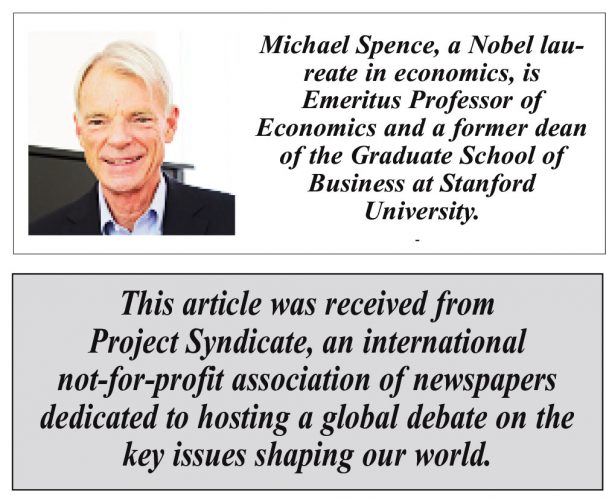MILAN – How to strike the right balance between the state and the market, and ensure the proper functioning of both, has been debated for centuries. But Indian author and philanthropist Rohini Nilekani offers an answer that focuses on neither. As the title of her 2022 book, Samaaj, Sarkaar, Bazaar (Society, State, Markets): A Citizen-First Approach, suggests, society comes first.
For Nilekani, a stable, well-functioning, and inclusive society is essential, first, as an end in itself. But it is also crucial for another reason: a healthy civil society is a prerequisite to effective governance and beneficial market outcomes. As she explains, the state and markets carry out important functions but are vulnerable to errors, imbalances, inefficiencies, and failures, such as capture by special interests. This can result in myriad problems, from rising inequality to shortfalls in the provision of public goods.
That is where society comes in. According to Nilekani, the only effective responses to government or market deficiencies come from civil society, including the values, relationships, and organizations that underpin it. When society is “malfunctioning” – for example, owing to deep polarization or fragmentation – that response mechanism is disrupted, and can even stop working altogether.
Nilekani’s argument evokes insights from two other thinkers: the economist Albert O. Hirschman and the political scientist Robert D. Putnam. Hirschman’s influential 1970 book Exit, Voice, and Loyalty: Responses to Decline in Firms, Organizations, and States argued that actors express their dissatisfaction with underperformance in two main ways. They can “exit” (in favor of an alternative) or use their “voice” to apply pressure for change (such as by highlighting their concerns, proposing solutions, or even threatening to take action that would undermine performance further).
But while it is probably relatively easy to “exit” a firm that is not meeting one’s needs as a consumer – especially if alternatives are readily available – exiting a country is not always a realistic or attractive option, nor equally available to all. More affluent or educated citizens generally have an easier time leaving their country and entering another. People without such advantages might also try to exit a bad situation, but it is likely to be much more difficult; in certain cases, they might even have to risk their lives.
This might help to explain Nilekani’s focus on the fine detail of the institutions whereby civil society exercises its influence over the state and markets. In her view, one can assume, voice is a more powerful, effective, and broadly accessible response to organizational underperformance than exit.
Likewise, Putnam focuses on civil society and community in America. In Bowling Alone: The Collapse and Revival of American Community and The Upswing: How America Came Together a Century Ago and How We Can Do It Again, he analyzes the multidimensional decline of community in the United States, providing a detailed account of the deterioration of civil-society institutions in the Gilded Age (from the late 1800s to the early 1900s), their reconstruction in the interwar period, and their decline again 2-3 decades after World War II. These institutions, Putnam argues, must be built from the ground up yet again.
Despite their differences, Nilekani, Hirschman, and Putnam all seem to share the belief that a healthy and cohesive civil society, supported by effective institutions, is a prerequisite for effective governance, market regulation, and necessary reforms to the state and the economy. For this mechanism to produce truly effective governance, however, citizens must also understand their own civic responsibility, as well as what it takes for the state (or other organizations) to deliver on their priorities. And, as Nilekani’s work shows, this is far from guaranteed.
When Nilekani surveyed Indian voters about what they wanted from their elected representatives, their responses always focused on local-level outcomes, especially with regard to reform and service delivery. Not one person mentioned anything about legislation. But well-crafted, forward-thinking legislation is essential to promote the kind of long-term inclusive growth that benefits all citizens.
Indians, in particular, should recognize this. India’s activist Supreme Court has used its authority to enforce citizens’ rights to advance consequential environmental and other reforms. Moreover, its public sector has created what many (including me) regard as the world’s best digital financial architecture, comprising a biometric identification system and a “unified payments interface,” administered by the National Payments Corporation of India.
This architecture – accessible to all citizens – enables not only instant payments, but also direct financial transfers from the government to poorer segments of the population in real time with no intermediaries and thus no “leakage.” It also provides for data mobility across multiple entities, from banks to digital wallets. This process is guided by legislation dictating that all data flows require permission from individuals who are the subjects of the data. Once permission is given, all data must flow, by law, directly from their location to their intended destination. This explains why there are no significant monopolies in India based on control over data.
The lesson is that laws and regulatory structures are critical to state activities that produce local-level benefits. If citizens are to push for reforms and interventions that increase efficiency, promote inclusion, and enable entrepreneurship, innovation, and long-term growth, they need to recognize this. The kind of effective civil society Nilekani envisions thus requires civic engagement, empowerment, and education, including an understanding of the rights and responsibilities implied by citizenship.
In a world that is becoming fragmented within and across countries, it is easy to lose hope for social and economic progress. Nilekani does not, and her thoughtful, realistic, and cautiously optimistic blueprint for a healthy society is worthy of attention, reflection, and debate.
Copyright: Project Syndicate, 2024.







